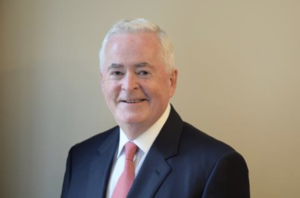Cleveland’s collaborative approach to economic development
Cleveland, Ohio has faced significant challenges over the last 20 years.
The crash of the manufacturing industries in the 1990s led to a reduction in the number of jobs to the sum of some 150,000. This had associated consequences for the local population, which reduced from around 800,000 to 400,000 as people headed elsewhere seeking opportunity. It also had consequences for the physical and social feel of Cleveland: there is a myriad of vacant and derelict property and, for those remaining, high levels of unemployment and limited opportunity. The downtown area became a ghostly area embroiled in economic decline.
The scale of the challenge meant that something drastic had to be done to respond and to stop a city with a heritage of industry, manufacturing, health organisations and universities from floundering. The response has been one of collaboration with key organisations coming together to reinvigorate and rejuvenate the local economy.
Organisations such as the Cleveland Foundation, City of Cleveland Economic Development, Cleveland State University, the Evergreen Cooperative, Neighbourhood Connections, and the University Hospitals have come together to commence a remarkable upturn in fortunes.
This week, as part of a three-week visit to the United States to look at alternative approaches to economic development, I met some of the key protagonists in this change, facilitated through the Democracy Collaborative.
Tracy Nichols is director of economic development at the City of Cleveland. In her seven years in post, Tracy has overseen over £7bn of construction activity in the downtown area of Cleveland, and construction associated in the Greater University Circle Area of around £6bn.
The focus of this construction activity has been upon ensuring the conditions are in place to enable key clusters of industry to be retained and grow (health-based technologies) and others to be redeveloped (IT-based technologies).
In addition to the physical approach, an array of loans have been provided through initiatives ranging from the vacant property initiative, the neighbourhood retails assistance programme, and the minority construction loan programme; all aimed at stimulating new enterprise in underserved markets.
John McMicken, chief executive of Evergreen Cooperatives, described how this a unique model of providing services has become an integral part of the Greater University Circle Area activities. Over the course of the last five years, Evergreen have set up three new businesses: Evergreen laundry, Evergreen construction, and Evergreen greenhouse; all with the purpose of being worker owned; addressing unemployment in seven key deprived parts of the city; and providing services for anchor institutions and others in the area. The impact is key with 120 people now employed and two of the business units profitable meaning further benefits for the members of the cooperative.
I also met Tom O’Brien, programme director of Neighbourhood Connections, a not-for-profit charged with connecting communities to the opportunities being created. The organisation has adopted a network based approach to engagement; with a series of small grants provided to community projects on the proviso that they share information about and link into the wider activities going on in the locality.
Neighbourhood Connections have also acted as the local broker for linking local people into emerging job opportunities at the anchor institutions; their job being to identify and prepare individuals for employment opportunity.
From Dr Ziona Austrian, director of the Center for Economic Development at Cleveland State University, I found out about the university’s role in the rejuvenation of Cleveland. It’s been two-fold: one as an anchor institution and a key component of the collaborative approach to economic development; and second as an evaluator of the emerging impact of the activities undertaken in the Greater University Circle Area. Engagement in the activities has enhanced the universities role as an employer, a purchaser, its link into communities, and its profile.
Cleveland is changing and its response to economic decline is ongoing, but it is important to note there is much work still to do. In terms of learning to date, the following have been critical success factors in the Cleveland approach:
- True collaboration is key. The activities have been driven at a very senior level by strategists and implemented by doers meaning the Cleveland approach represents both strategy and action
- A blend of resource is important. The philanthropic investment of the Cleveland Foundation has stimulated much of the activity; however this has been supplemented by leveraged resource through the City of Cleveland, the anchor institutions and others
- A response to economic decline cannot just be about growth. The activities have been driven by both a need to create the conditions for growing companies to stay and invest in Cleveland and also address some of the social ills facing the city around unemployment, poverty and discrimination
- It takes time. Ten years in and there is still much to do. The collaborators are signed up for the long haul.















